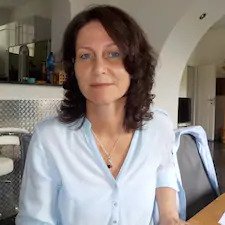Early life
Lafcadio Hearn was removed from his mother in infancy. The house that was born is located behind the main square of the city and the road bears its name in Greek and Japanese. She was raised by a strict aunt in Dublin and attended strict Catholic schools in England and France. She had in mind to make him a faithful Christian of the Catholic Church and later heir to her fortune.
Little Lafcadio grew up in a depressing environment where no one called him by his name, but everyone called him "the child". He developed fears about ghosts and Gnomes, whom his aunt decided to fight by locking him at night in his darkroom.
In the biography novel “The Odyssey of Lafcadio Hearn”, the writer Jonathan Cott calls him as "Wandering Ghost". At the age of 16, he went blind from the left eye and finally his father's death marked the termination of his studies, his financial poverty and his emigration to the United States at the age of 19.
From America to the West Indies
At the age of 19, he left for America. He moved to Cincinnati, where he got a job as a journalist. In 1877 he moved to New Orleans for a series of articles and remained there for 10 years, translating works of foreign literature. Then the publishing company he worked for sent him to the West Indies. In the three years he stayed there, he wrote two novels.
Japan: The Last Stop

In the spring of 1890, Hearn traveled to Japan, where he was to spend the rest of his life. He initially worked as an English teacher. He had four children with Setsu Koizumi, daughter of a samurai family. He took his wife's surname and was renamed Yakumo, which means "the place where the clouds are born", to honor the place that offered him the coveted port he always sought, Japan. The reason he dictated this change was the love for his family. It was necessary to settle, in accordance with Japanese law, the issues relating to his marriage and property.
In October, 1894, he secured a journalism position with the English-language Kobe Chronicle, and in 1896, with some assistance from Chamberlain, he began teaching English literature at Tokyo (Imperial) University, a post he held until 1903. In 1904, he was a professor at Waseda University.
His Work
His books about the land of the rising sun, especially his collections of Japanese legends and ghost stories, have made him an inseparable part of the Japanese literary world. He described Japan of Legends, Samurai and traditional values and was described as Japan's most authentic author in the West.
Some of his most important books are: "The Boy who Drew Cats", "The Land of chrysanthemums”, "Within the Circle Of Souls”, "Japanese Legends”, "Writings from Japan: An Anthology".
His new country, Japan, honored him by proclaiming its national author.
The end of his life
Lafcadio Hearn, who lived in Japan for the last 14 years of his life, died on 26 September 1904 as a result of pulmonary edema.
A small funeral procession carried his body to the old Kobupera temple. The Buddhist banners were ahead, and behind them were two young children carrying live birds in small cages, who would leave them free to symbolize the escape of the soul from its shackles. They followed the people who carried his coffin, further back the priests with their bells and food for the dead, while the procession was closed by the family and friends of the dead.
In the memorial tablet that his students set up, there was the following text:
"In Lafcadio Hearn, whose pen was more powerful even than the sword of the glorious nation he loved, a nation that most great values was that he took you into his arms as a citizen, and offered him, alas, the grave".
Lafcadio Hearn Historical Center

Did you know that in Lefkada is located the only museum exhibition in Europe dedicated to Lafcadio Hearn? Lafcadio Hearn Historical Center is situated in the Cultural Center of the Municipality of Lefkada.
The visitor with the help of texts, photographs, exhibits and audiovisual applications will explore the milestones of the extraordinary life of Lafcadio Hearn along with the cultures of Europe, USA and Japan of the late 19th and early 20th century through the Open mind of Hearn writings, lectures and tales.
For the creation of the "historical center of Lαfkadio Hearn", the following co-operated: Municipality & Cultural Center of Lefkada, Municipality of Kumamoto, Municipality of Matsue, Municipality of Shinjuku, University of Toyama, Municipality of Yaizu, NPO Genki Miyagi, Takis Efstathiou, Maria Genitsariou, Koizumi Family, Masaaki Noda, Tety Solou, Yumiko Yoneda.
The entrance of the Hall of the Historical Center adorns the sculpture entitled” Lafcadio Hearn—Odyssey of an Open Mind " by the famous Japanese sculptor Masaaki Noda.
Free Entrance
Opening Hours:
Monday-Friday 09:00 - 14:00
(During the summer period, the museum's program varies so we suggest that you communicate with them for better information)
Address: A. Sikelianos & N. Svoronou 1, Lefkada - Map
Telephone: (+30) 2645026635
> Visit the page of the historical center of Lefkadian Hern on facebook and the website.
______________________
+3 more information worth knowing:
- Dozens of Japanese University Chairs are named in honor of Hearn. His works are taught in schools. There are eight museums in his honor.
- Its statue dominates the central square of Tokyo and its monuments have been erected throughout the country.
- His life became a series in 1987 on Greek television starring George Tsakiri.
Πηγές: https://www.sansimera.gr/biographies/131 , https://www.mixanitouxronou.gr/o-ethnikos-syggrafeas-tis-iaponias-einai-o-ellinas-leykadios-chern-ta-8-moyseia-pros-timi-toy-kai-i-mythistorimatiki-zoi-toy/ , https://www.in.gr/2019/06/27/plus/features/leykadios-xern-taksidi-apo-ti-leykada-stin-iaponia/ https://www.lefkasculturalcenter.gr/el/istoriko-kentro-lefkadiou-chern/ https://www.facebook.com https://www.tovima.gr/2017/11/07/culture/i-odysseia-toy-leykadioy-xern/ https://el.wikipedia.org https://museumfinder.gr/item/istoriko-kentro-lefkadiou-chern/










